The content of the article
Each owner tries to surround his pet with care and love. But this is not always enough, because animals still need competent care. For example, cats often suffer from tinnitus. Therefore, it is necessary to regularly inspect their auricles in order to timely resolve the problem.
What could mean the appearance of dirt in the ears of a cat
The body of any living creature has its own characteristics. The appearance of dirt in the ear canals of a completely healthy cat is usually not a concern. But sometimes this symptom means that the animal has a dangerous disease or the inflammatory process of the hearing organ develops intensively. In normal condition, the inside of the cat’s ears has a light pinkish tint. They may have a little sulfur secret and regular dust. In this case, an unpleasant odor will never come out. Often, mites hide under the dirt in the ear canals, which poses a danger to the health of the pet.
Especially it is worth paying attention if the cat constantly shakes its head and scratches its ears. In this case, you can’t do without the help of a veterinarian, since only a specialist is able to establish the true cause of the animal’s malaise, and choose the best option to deal with the problem. Do not self-medicate the animal. But, if you regularly conduct a routine inspection of the ears of the pet and, according to the rules, carry out hygienic cleaning, a similar problem is unlikely to arise.
The main causes of cat ear contamination
If accumulations of dirt, serous secretions were found in the ears of a domestic cat, or pus appeared, such pathological phenomena can be justified by such factors:
- The development of otodectosis - a pathology, the appearance of which is most often provoked by ear mites. These parasitic microorganisms are firmly fixed outside the ear canal. Due to the fact that the main food of ticks is the epidermis, the skin inside the auricle is damaged, and liquid contents are released from the wounds. This secret, when dried, turns into dirt. But the main danger is that a healthy cat is capable of contracting a tick when it comes into contact with a sick animal. These small parasites live even on the skin of human hands, and they can also be found on his clothes.
- The course of otitis media, which most often develops as a result of infection. But this disease can be the result of an animal head injury. Otitis should be treated only after examination of the animal by a veterinarian.
- An allergic manifestation to food or an external provoking factor.
- Infectious processes caused by fungus or other pathogenic microorganisms.
- Big ears of the animal. There are some breeds of cats that differ in the impressive size of the ears. This anatomical feature contributes to dust accumulation. When accumulating in large quantities of dirt, sulfur production increases. All these phenomena entail significant contamination of cat ears.
- Wool deficit. This feature is also observed in certain cat breeds. An example is the sphinxes. In cats of this breed, the ears are almost devoid of hair, which makes the organ of hearing of the animal defenseless from any external negative influence. Pets with hairless breeds should carefully clean their auricles.
Owners of domestic cats should check the ears of the animal from two months of age.Moreover, this should be done regularly. The first cleaning of the ears of a kitten is best done in a veterinary clinic.
How to clean your cat’s ears
The procedure for cleaning the ears of a pet is a rather difficult task that requires compliance with certain rules. To perform the manipulation, you need to prepare the necessary material:
- Cotton buds or tampons.
- A solution of hydrogen peroxide, but you can use a special gel.
- Towel for fixing the animal.
In principle, this arsenal of auxiliaries is enough to clean the auricles. After all of the above has been prepared, you should do the following:
- Put the animal on a chair, fixing it firmly with a towel.
- Pull off the edge of the ear with your finger.
- Inspect thoroughly the inner surface of the animal’s ear.
- If dirt deposits are found outside, carefully remove them using a tampon moistened with peroxide.
- Then pour a few drops of the drug prescribed by the veterinarian.
- To wait for the liquid to distribute evenly, you can gently massage the ear at the base for this purpose.
- After that, you can carefully remove the dirt with a cotton swab.
- At the end of the procedure, wet the remaining liquid with a cotton pad.
For patience and endurance, a cat after ear cleaning should be rewarded with a favorite treat.
An important point: Independently apply any ear drops without a doctor’s prescription.
When Veterinary Care Required
If the pet has developed otitis media, then the cat will constantly have its head down, and the sore ear is combed to the blood. In such a situation, urgent veterinary help is needed to stop the inflammatory process. In advanced cases, the doctor usually prescribes antibiotics. Professional help is also necessary for a cat with allergic reactions.
The owner of the domestic cat is required to provide proper care for the animal. And cleaning and regular inspection of the ears - this is an excellent prevention of a number of diseases.
Video: cat ear mite

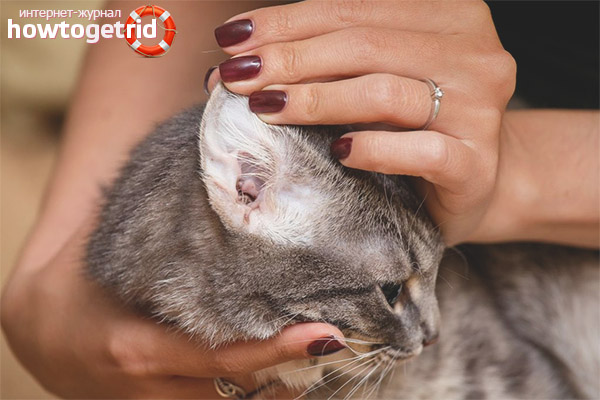
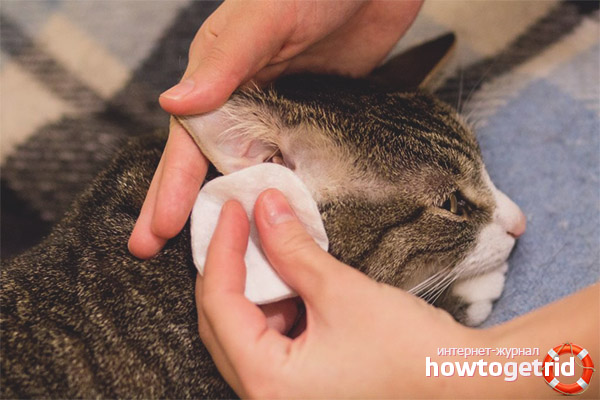



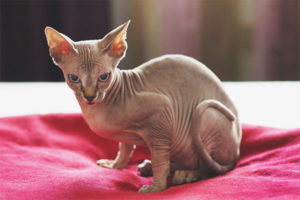
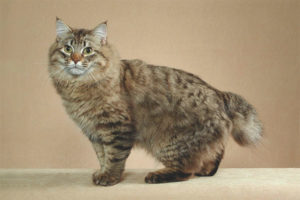
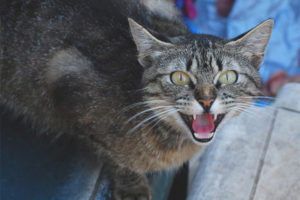
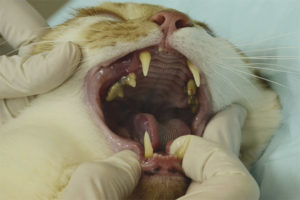
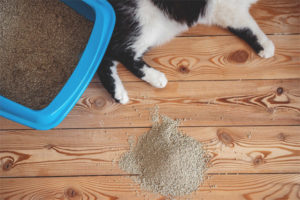
Submit